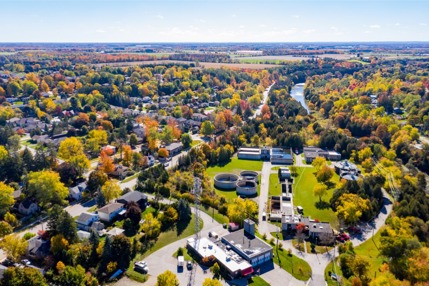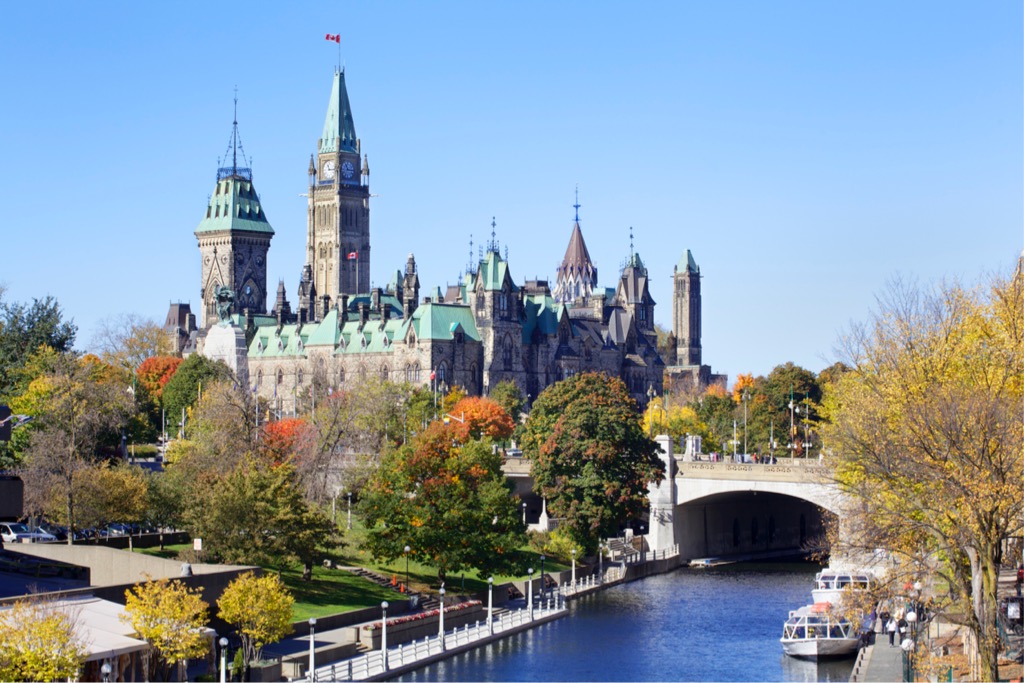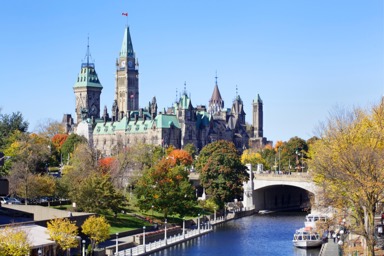Ontario is the fourth-largest province in Canada with an estimated population of over 14.5 million at the end of 2020. It’s home to cities like Toronto and Ottawa (Canada’s capital), as well as natural destinations like the iconic Niagara Falls.
The weather in Ontario is dependent on which part you live in. The northernmost parts of the province experience a subarctic climate, while the majority of the province enjoys a much more mild climate year-round. Some areas of Ontario experience harsher winters due to the proximity of The Great Lakes.
Americans and/or people moving to Canada from other countries may want to consider applying for the Ontario Health Insurance Plan, as well as examine the Ministry of Transportation website for a driver’s license application.
1. Cost of Living in Ontario
The cost of living in Ontario can vary by location. There are many parts of Ontario that are more affordable than other areas of Canada.

The average monthly cost of living in Ontario for a family of four is around $5,000 (CAD), and a single person is estimated at around $2,200 (CAD). These numbers include housing, food, transportation, health care, and education. It’s important to note that there are areas that are much more expensive to live in. For example, the average monthly rent for an apartment in Toronto, Ontario is $2,200 (CAD) whereas the average rent in London, Ontario is approximately $990 (CAD).
In Canada, the average cost of living is about $2,700 per month for a single person and around $5,100 for a family of four. The average for all of Canada is close in comparison to Ontario.
Below are a few common expenses and their average price in Ontario.
- Home price: $505,000 (as of 2021)
- Rent: $1,700 (one bedroom); $2,400 (three bedroom)
- Gas: $3.30 per gallon
- A gallon of milk: $3.33
- A carton of eggs: $2.25
- Doctors visit: $80 (without insurance)
- Dentist visit: $150

2. Major Cities in Ontario
Ottawa
Ottawa is the capital of Canada. It has a more laid-back feel than the hustle of Toronto and other bigger cities. There are a lot of historical monuments, museums, and botanical gardens, plus the Ottawa River runs through the city, providing a picturesque landscape.
Toronto
Toronto is the capital of Ontario and has the highest population. One of the most culturally diverse cities in Canada, Toronto is home to many museums, art galleries, and other tourist attractions that make living there fun.
Hamilton
Hamilton is a beautiful city located on the western tip of Lake Ontario. Hamilton is home to the “Niagara Escarpment” – a forested area with waterfalls and conservation areas – runs through the city dividing it in two. Hamilton is also one of the most affordable areas in Ontario.
Oakville
Oakville is a lovely city between Toronto and Hamilton and boasts a small-town feel. It’s known for its many parks and amazing architecture. This is a great area for anyone who wants to live in a calm, low-key environment but close to a big city. From Oakville, Toronto is just a short drive away.
Cobourg
Located on the North Shore of Lake Ontario, Cobourg is a quaint little town nestled between Toronto and Kingston. Cobourg is often referred to as “The Gem of Lake Ontario” because of its prime location. As a community of just under 20,000, you’ll be close enough to a city but far enough to relax and enjoy the small-town feel of Cobourg.
3. Ontario Job Market
The average household in Ontario earns about $98,000 (CAD) before tax. Alternatively, the median household income after taxes in Ontario is $65,000 (CAD).
In December 2019, the unemployment rate in Ontario was just 5.2%. This is compared to the national Canadian average in December 2019 which was 5.6%.
Some of the most common jobs in Ontario include:
- Sales associate
- Warehouse worker
- Medical assistant
Some of the top industries in which to work in Ontario include:
- Retail
- Food & Beverage
- Healthcare
- General Contracting/Labor
- General Office Work
4. Things to Do in Ontario
There is much to do, see and eat in Ontario. Here are just a few of the most popular spots in the province.
Outdoor Activities
- Fishing on Lake Ontario
- Hiking (over 1,100 miles of trails)
- Paddleboarding, kayaking, or canoeing on the lakes and rivers
- Swimming at Grand Bend Beach
Parks and Attractions
Food and Drink
- Biff’s Bistro (Toronto)
- Patois Toronto
- York Street Kitchen (Stratford)
- SOMA Chocolate Makers (Toronto)
- Atelier (Ottawa)


5. Things to Know Before Moving to Ontario
- Tourism: While Toronto and Niagara Falls are both hot spots for tourism, the majority of the Ontario province is not a tourist destination. There are many, many quiet and serene locations within Ontario. If you prefer nature to the hustle and bustle of the city, Ontario is still a great choice.
- Public Transportation: Most cities in Ontario have their own public transportation systems, making it easy to get around if you don’t have your Canadian driver’s license already. If you need to apply for a Canadian driver’s license, visit the website of the Ministry of Transportation.
- Healthcare: If you’re sure you’ll be moving to Canada, you’ll want to apply for the Ontario Health Insurance Plan so that you won’t have potentially high healthcare costs.
- Storage: You will most likely need a storage unit for any of your household items (that don’t fit in the new home) or outdoor activity toys. You can either find your own storage facility, or we can direct you to one of our facilities in your desired location in Ontario, including:
- Toronto;
- Oakville has two storage locations: on Service Road and on Cornwall Road;
- There are also locations in Vaughan, Milton, Pickering, and more.
- Wildfires: Wildfires are a common occurrence from May to September in Ontario and all of Canada is susceptible. The winds that come off The Great Lakes can be an accelerant to any fires occurring in Ontario.









